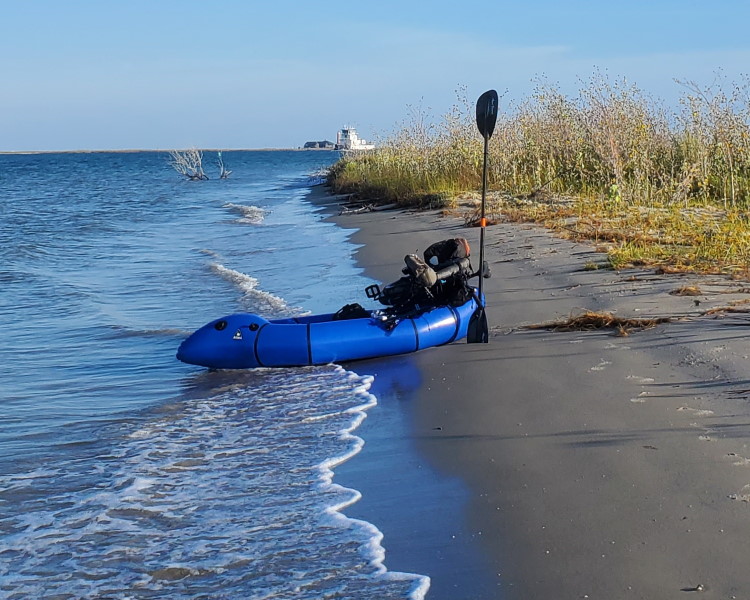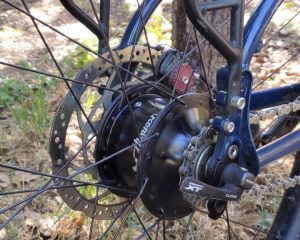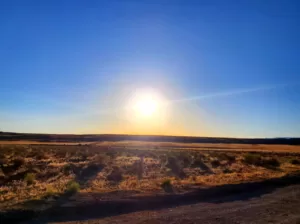Bikerafting is an exciting way to explore the great outdoors by combining cycling and packrafting into a multi-modal trip. The ability to travel by both land and water presents opportunities to traverse routes that would otherwise be inconvenient or impossible. While traveling on land, the packraft can be deflated and carried on the bicycle. When traveling on the water, the bicycle is loaded onto the front of the raft. Additional gear can be carried and other activities such as camping and fishing can be incorporated as well.
The Motivation
Have you ever tried to plan a bikepacking route but there simply wasn’t any way to connect it together by land only? Do you enjoy paddling rivers, but wish you didn’t have to arrange vehicle transports? Bikerafting trips can be a way to leisurely explore water ways close to home. Or, they can be lengthy expeditions into a vast wilderness. It’s really up to what you want to get out of your bikerafting trips. For myself, one of the most appealing aspects is the open ended nature: choose your own adventure and go places that you couldn’t before whether close to home or afar.
The Necessary Gear
Assuming you already have a bicycle, the three big pieces of gear needed are a packraft, a paddle, and a PFD. For those who would like to test the waters, equipment can be rented and guided trips are available. Current kayakers also likely already have a suitable paddle and PFD.
Packraft
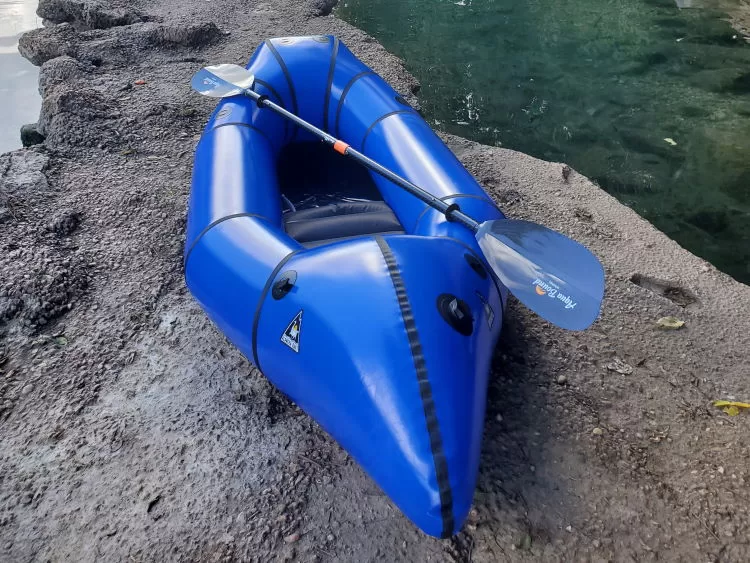
Packrafts are now available from several manufacturers that are designed to carry a load on the front like a bicycle. These packrafts will generally have more attachment points on the front of the raft and be rated for carrying heavier total loads. It’s important to keep in mind the amount of gear and how you plan to carry it on the raft. Some rafts are available with internal cargo systems where drybags of gear and supplies can be placed inside the tubes of the raft through an air tight zipper.
The packraft that I currently use and recommend is the Alpacka Raft Caribou. This packraft is designed for carrying heavy loads like a bicycle on the bow while remaining very light weight (~5 lbs).
Paddle
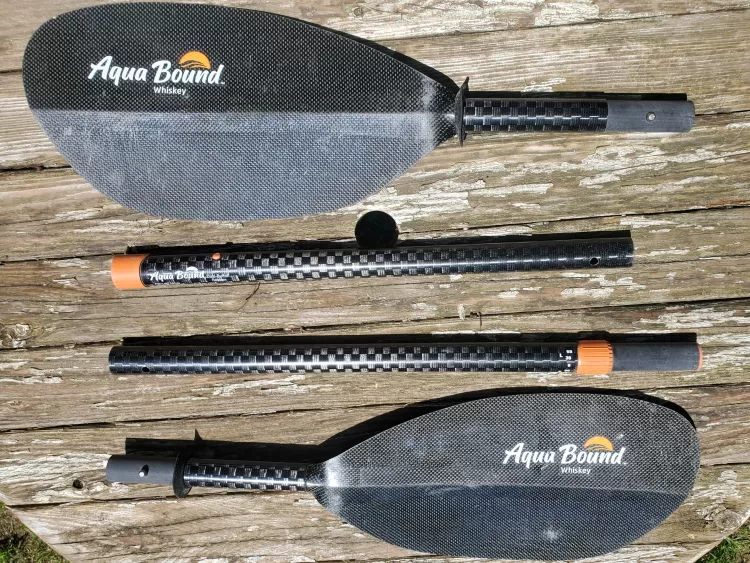
A paddle is used to propel and steer the raft and those most commonly used are the same type used by kayakers. A particular concern with selecting a paddle for bikerafting is how you are going to carry it on the bike. I really like four piece paddles as they are easier to transport on the bike. Other factors include the length of the paddle, blade shape, and materials. If you are new to paddle sports, the following can seem like a lot of options, but whomever you get your packraft from should be able to guide you through this selection. The length of the paddle is primarily determined by the size of the paddler and the width of the boat. Blade shapes are commonly designed based on the paddling style (high angle vs low angle stroke). Finally, the material the paddle is made of will significantly impact both the weight and cost of the paddle.
I currently use the Aqua Bound Whiskey Carbon 4-piece which is a good ultralight paddle. The Aqua Bound Manta Ray Carbon 4-piece is another good option that is significantly cheaper but a bit heavier.
PFD
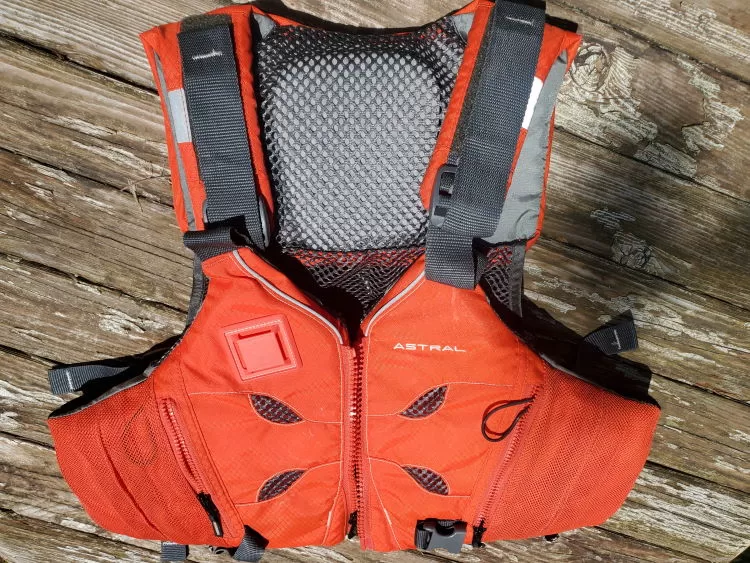
Water sports like rafting present unique hazards that may not be apparent to those just beginning. An essential piece of safety gear is an appropriate personal floatation device (PFD). PFDs come in a variety of types based on their buoyancy, design, and intended usage. These are assigned into types by the US Coast Guard (USCG). Packrafters generally opt for USCG Type III (or specifically designed Type V) PFDs for their mix of safety and comfort. A PFD can only work if you’re actually wearing it so it is important to select one that fits properly and is comfortable. Beyond the primary functional and fit characteristics, PFDs may vary in features like pockets and accesory attachment points.
I currently use the Astral EV-Eight. This Type III PFD is well ventilated to keep you cool in warmer weather, and I like the high back design for comfort. It also manages to be light weight while having features like zippered pockets.
Miscellaneous Gear
You will need some way to attach the bicycle to the packraft. This is typically done with Voile Straps or similar (I have a mix of Voile and Titan Straps). The exact details will vary based on the bicycle and packraft used so the following should be considered only as an example. It’s important to be aware of any potentially sharp edges on the bike to ensure that they do not contact the raft. To load the bike onto the front of the raft, I insert short straps into the strap plates or attachment loops on the raft. I remove the non-drive side pedal and front wheel from the bike. I then lay the bicycle gently onto the bow of the raft with drive-side up. I strap the bike down firmly in place and then stack the front wheel on top of the bike and use two longer straps to secure it. If a narrower setup is desired, the rear wheel can be removed and stacked on top as well. Exact placement will vary from bike to bike to get the weight evenly distributed across the bow.
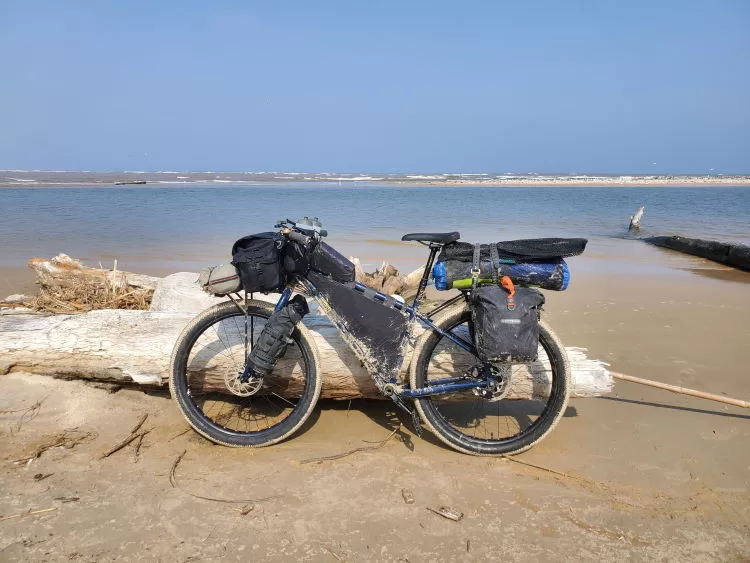
The same straps can also be used in attaching the packraft to the bicycle. I typically carry my packraft and paddle on top of my rear rack with a very thin flexible cutting board repurposed to keep the raft from rubbing on the other items attached to the rack. The two long straps that I use to secure the wheel (or wheels) when rafting are used to attach everything to the rack. Another popular way to carry rafts and paddles is by harnessing to the front bars on bikes with flat bars. The raft and/or paddles can also be carried with a backpack, but I usually do not use a backpack when bikerafting.
Packrafts are durable but not as tough as hard shell kayaks and larger, burlier multi-person rafts. However, they are generally easy to repair and a small repair kit can be carried that takes up little space or weight.
Clothing selection is important and should not be overlooked. You will get wet to some extent when rafting so dressing accordingly is important. I bikeraft in warm environments currently and choose fast drying and sun protective clothing. Rain clothing can protect from the occasional splashes on calmer waters. In colder climates and on cold water, dry or wet suits may be required for both comfort and safety. If you decide to take on more challenging rapids after you progress, a kayaking helmet will also be needed.
Training and Safety
For those without experience with similar paddle sports, it’s a good idea to have initial sessions with an experienced paddler. You can also reach out to local outfitters to find guides and instructors that can help you learn the fundamentals. Most people are unlikely to find instructors in packrafting in their local area, but basic skills gained from kayaking are highly transferrable.
Researching the places you intend to raft is essential. In addition to local outfitters and guides, online paddle sport forums and user groups are valuable resources to learn about good places to paddle, access points, how to portage around obstacles, and the conditions needed for safe and enjoyable trips. Although rafts are slow on still water, local ponds, lakes, or reservoirs can be good places to get initial practice.
Luc Mehl, co-author of “The Packrafter’s Handbook,” maintains a list of fatal packrafting incidents on his blog which includes at least one fatal bikerafting accident that occurred on open water. Undoubtedly, there are many close calls and serious incidents that have occurred in addition to these most severe cases. Bikerafting, like other outdoor activities, can be a fun and safe pursuit when approached with basic safety in mind.
Parting Thoughts
Bikerafting is an exciting and rewarding outdoor activity that can take you to new places or enjoy those around you in a new way. If it sounds like fun, you’ll be happy to see where your bike and raft can take you next.
Notice: Outdoor activities such as those described on this site are inherently dangerous. Effort has been put forth to present factual information but no guarantee is made that it is complete or represents current conditions. You assume all risk with any use of the information on this site.
